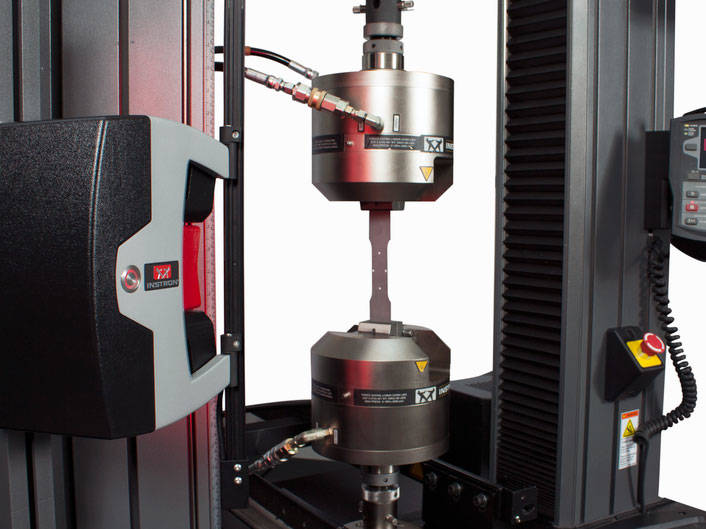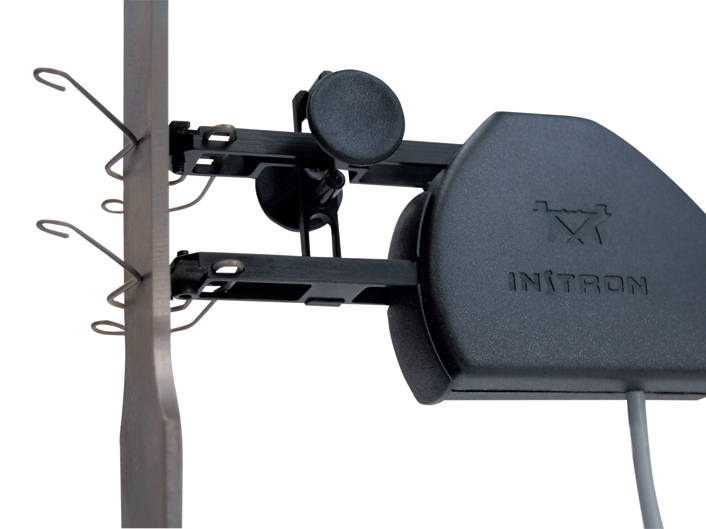ISO 10275, ASTM E646, and JIS Z 2253 specify methods for determining the tensile strain hardening exponent, commonly called the “n-value”, of flat metallic materials, typically sheet and strip. The strain hardening exponent (n) of sheet metal is the material’s response to cold working (a measure of the increase in strength due to plastic deformation).
To calculate the n-value, a test is performed to ISO 6892 and using the axial extensometer, a stress strain curve is produced. The n-value is calculated over the whole uniform plastic strain range. This is typically from the beginning of uniform strain hardening region (after any yield point phenomena) until just before the point at which tensile strength is calculated, Rm. These calculations can be done automatically using Bluehill Universal.
An ISO 10275, ASTM E646, or JIS Z 2253 test is typically performed at the same times as ISO 10113, ASTM E517, or JIS Z 2254, the plastic strain ratio (r-value).
Sheet metal testing applications require calculations such as yield strength, yield point elongation, ultimate tensile strength, plastic strain ratio ('r' value) and the strain hardening exponent ('n' value). These calculations place a high physical demand on traditional contacting extensometers for measuring axial and transverse strain to allow for enough travel to test the specimens through break, but small enough gauge lengths to ensure high accuracy in measurements. Additionally, relevant ASTM and ISO testing standards have accuracy requirements that must be achieved.
The Japanese Standards Association promotes JIS test standards for sheet metal testing applications which require calculations such as yield strength, yield point elongation, ultimate tensile strength, plastic strain ratio ('r' value) and the strain hardening exponent ('n' value). These calculations place a high physical demand on traditional contacting extensometers for measuring axial and transverse strain to allow for enough travel to test the specimens through break, but small enough gauge lengths to ensure high accuracy in measurements. Additionally, relevant JIS, ASTM and ISO testing standards have accuracy requirements that must be achieved.
Video extensometry has not traditionally been used for this application, as most customers in the metals industry use contacting extensometers and trust the reliability of the results. Developments in the technology of extensometry offer metals testing customers other options, such as Instron's Advanced Video Extensometer 2 (AVE 2). Not only does this solution allow for simultaneous collection of axial and transverse strain data and reduce the maintenance required for wear and tear on knife-edges, it also increases productivity and simplifies testing.
Instron’s AutoX automatic contacting extensometer is another excellent solution for strain measurement, as it provides repeatable r-value results that are not influenced by operator input as traditional extensometers are.
The challenges of testing to this standard are:
- Strain measurement
- r-value calculation
Instron's Solution:
- Instron’s AVE 2 and AutoX Biaxial extensometers provide accurate, repeatable strain measurement that meets the standards’ requirements
- Bluehill Universal allows for easy calculation of r-value within the software, and even live plotting of r-value
It is important to review ISO 10275:2007, ASTM E646 – 16, and JIS Z 2253:1996 in order to fully understand the test setup, procedure, and results requirements.



